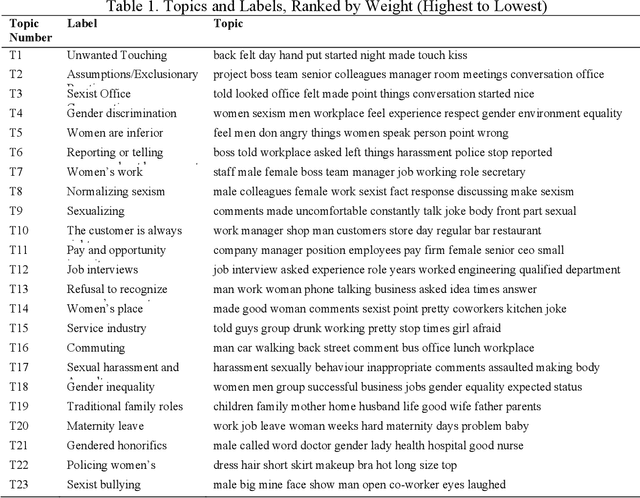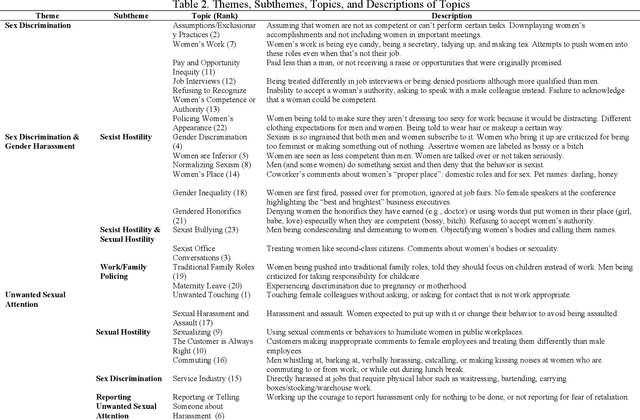Suzanne C. Swan
Hidden in Plain Sight For Too Long: Using Text Mining Techniques to Shine a Light on Workplace Sexism and Sexual Harassment
Jul 01, 2019

Abstract:Objective: The goal of this study is to understand how people experience sexism and sexual harassment in the workplace by discovering themes in 2,362 experiences posted on the Everyday Sexism Project's website everydaysexism.com. Method: This study used both quantitative and qualitative methods. The quantitative method was a computational framework to collect and analyze a large number of workplace sexual harassment experiences. The qualitative method was the analysis of the topics generated by a text mining method. Results: Twenty-three topics were coded and then grouped into three overarching themes from the sex discrimination and sexual harassment literature. The Sex Discrimination theme included experiences in which women were treated unfavorably due to their sex, such as being passed over for promotion, denied opportunities, paid less than men, and ignored or talked over in meetings. The Sex Discrimination and Gender harassment theme included stories about sex discrimination and gender harassment, such as sexist hostility behaviors ranging from insults and jokes invoking misogynistic stereotypes to bullying behavior. The last theme, Unwanted Sexual Attention, contained stories describing sexual comments and behaviors used to degrade women. Unwanted touching was the highest weighted topic, indicating how common it was for website users to endure being touched, hugged or kissed, groped, and grabbed. Conclusions: This study illustrates how researchers can use automatic processes to go beyond the limits of traditional research methods and investigate naturally occurring large scale datasets on the internet to achieve a better understanding of everyday workplace sexism experiences.
 Add to Chrome
Add to Chrome Add to Firefox
Add to Firefox Add to Edge
Add to Edge